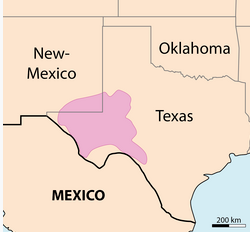Renewable Energy
Why Steve Schmidt Left the Republican Party — and What We Can All Learn
 I know lots of wealthy people from prep school, college, and several decades of business consulting, all of whom seemed like decent folks at the time. Yet now, I sometimes wonder how many are Trump donors. It’s upsetting just to think about it.
I know lots of wealthy people from prep school, college, and several decades of business consulting, all of whom seemed like decent folks at the time. Yet now, I sometimes wonder how many are Trump donors. It’s upsetting just to think about it.
It’s hard to believe that this collapse of basic moral values happened in the United States.
Why Steve Schmidt Left the Republican Party — and What We Can All Learn
Renewable Energy
An Idea for the Permian Basin: Leave It Alone
 The Permian Basin is a vast sedimentary basin in West Texas and southeastern New Mexico that is the largest oil and gas-producing region in the United States.
The Permian Basin is a vast sedimentary basin in West Texas and southeastern New Mexico that is the largest oil and gas-producing region in the United States.
I just got an email from “East Daley,” whose white paper Permian Basin at a Crossroads “breaks down who stands to benefit—and who’s at risk.”
I can answer these questions without even reading the white paper:
Who stands to benefit (monetarily): Greedy pigs whose investments are ruining the planet.
Who’s at risk: The eight-plus billion people on this planet who, along with their descendants, are counting on a stable climate.
Renewable Energy
Does Killing Innocent People Cause Americans “Outrage?”
 A reader notes: These are war crimes meant to test the amount of public outrage they can get away with.
A reader notes: These are war crimes meant to test the amount of public outrage they can get away with.
It’s hard to know the precise motive for these crimes. Obviously, Trump supporters have no issues with our country’s executing innocent people.
It’s fair to say the rest of us are “outraged,” but that’s something that happens almost every day.
As someone posted, “Biden was far from perfect, but at least we didn’t wake up every morning wondering what new form of hell was awaiting us.”
-
Climate Change2 years ago
Spanish-language misinformation on renewable energy spreads online, report shows
-
Climate Change3 months ago
Guest post: Why China is still building new coal – and when it might stop
-
Climate Change Videos2 years ago
The toxic gas flares fuelling Nigeria’s climate change – BBC News
-

 Greenhouse Gases1 year ago
Greenhouse Gases1 year ago嘉宾来稿:满足中国增长的用电需求 光伏加储能“比新建煤电更实惠”
-
Greenhouse Gases3 months ago
Guest post: Why China is still building new coal – and when it might stop
-

 Climate Change1 year ago
Climate Change1 year ago嘉宾来稿:满足中国增长的用电需求 光伏加储能“比新建煤电更实惠”
-

 Carbon Footprint2 years ago
Carbon Footprint2 years agoUS SEC’s Climate Disclosure Rules Spur Renewed Interest in Carbon Credits
-
Renewable Energy4 months ago
US Grid Strain, Possible Allete Sale





